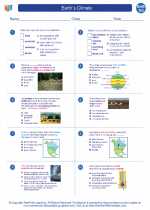Nebulae
Nebulae are vast clouds of gas and dust in space. They are the birthplaces of stars and serve as the raw materials from which new stars are formed. There are several types of nebulae, each with its own unique characteristics and formation processes.
Types of Nebulae
- HII Regions: These are large, low-density clouds of partially ionized gas, primarily made up of hydrogen. They are often associated with young, massive stars.
- Reflection Nebulae: These nebulae do not emit their own light but instead reflect the light of nearby stars. The dust in these nebulae scatters the light, creating beautiful blue colors.
- Planetary Nebulae: These are the remnants of a star's outer layers after it has exhausted its nuclear fuel. They often have a striking, round appearance and are illuminated by the hot core of the dead star, known as a white dwarf.
- Dark Nebulae: These are dense clouds of gas and dust that obscure the light from objects behind them. They are often the birthplaces of new stars.
- Supernova Remnants: These are the remnants of massive stars that have exploded as supernovae. They are rich in heavy elements and play a crucial role in the chemical enrichment of the universe.
Formation of Stars in Nebulae
Stars form within nebulae through a process called stellar nucleosynthesis. The gravitational collapse of a dense region within a nebula leads to the formation of a protostar. As the protostar gathers more mass from the surrounding nebula, it enters into a phase of nuclear fusion, becoming a full-fledged star.
Studying Nebulae
Scientists study nebulae using telescopes that detect different wavelengths of light, such as visible light, infrared, and radio waves. By observing the emissions from different types of nebulae, scientists can learn about the physical conditions and processes occurring within these cosmic clouds.
Study Guide
When studying nebulae, it's important to understand the different types of nebulae and their characteristics. Be sure to grasp the process of star formation within nebulae and the role they play in the universe's chemical evolution. Additionally, familiarize yourself with the methods and instruments used to study nebulae, such as telescopes and spectroscopy.
.◂Earth Science Worksheets and Study Guides High School. Earth`s Climate

 Worksheet/Answer key
Worksheet/Answer key
 Worksheet/Answer key
Worksheet/Answer key
 Vocabulary/Answer key
Vocabulary/Answer key
 Vocabulary/Answer key
Vocabulary/Answer key
 Vocabulary/Answer key
Vocabulary/Answer key
